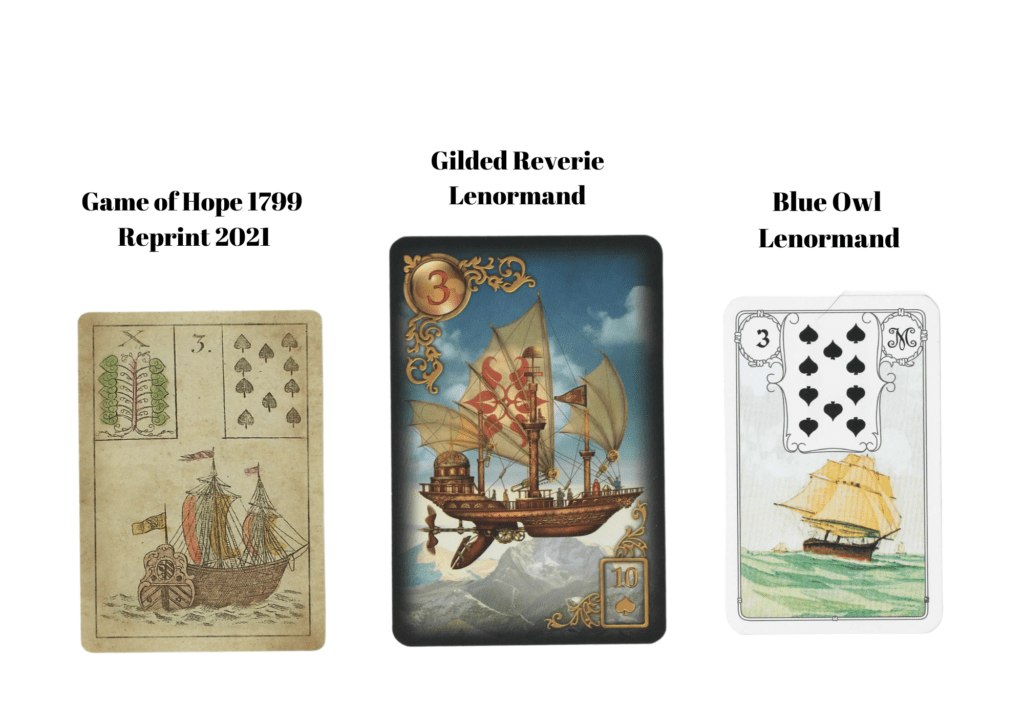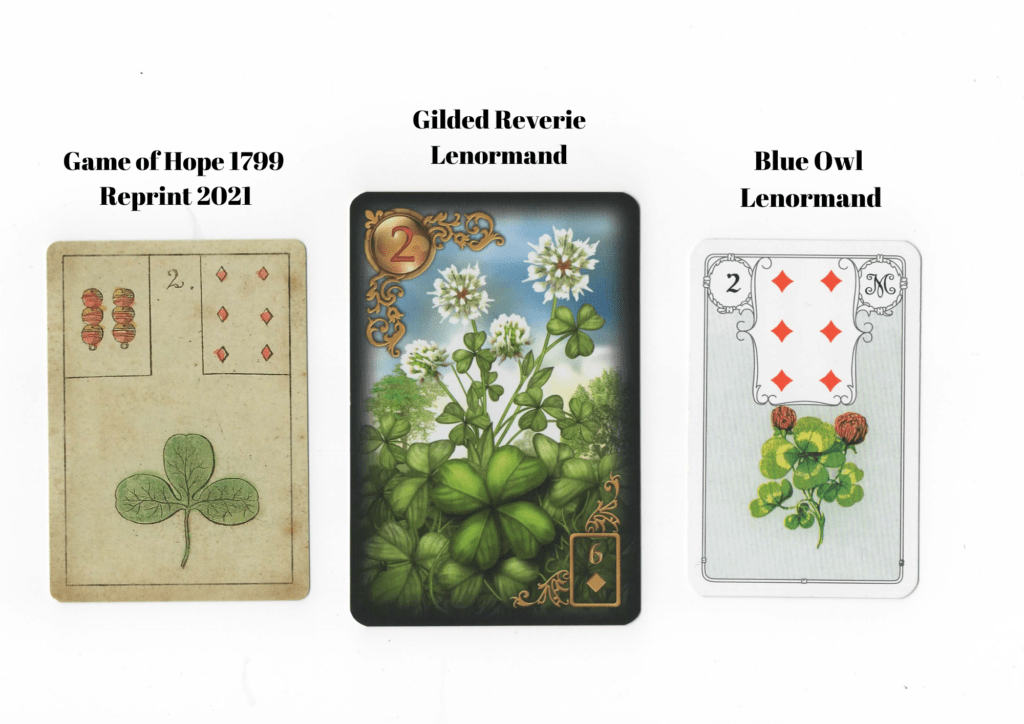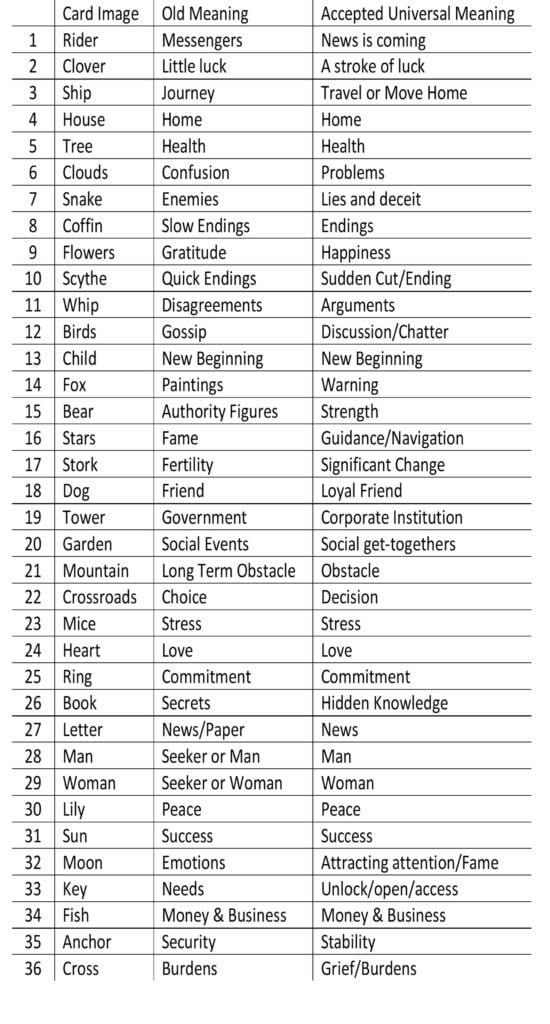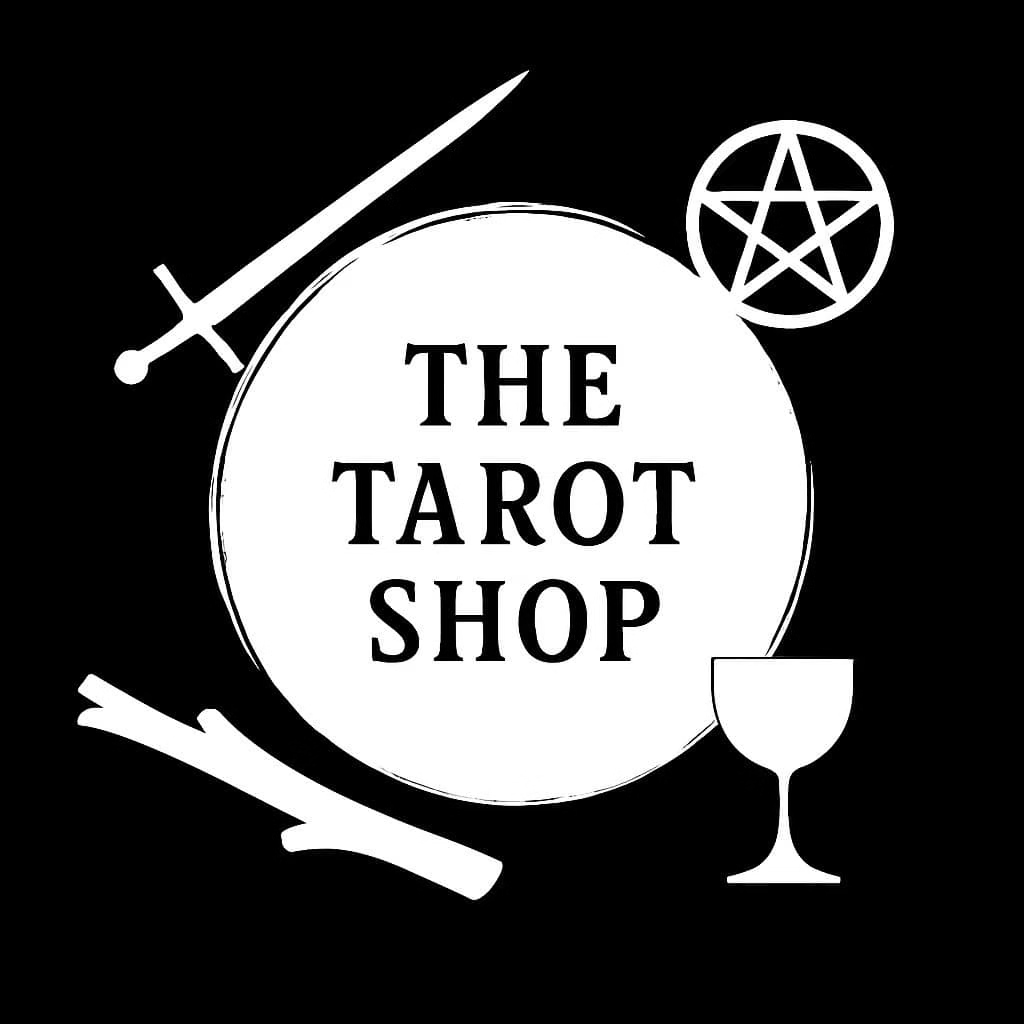What Are Lenormand Cards?
When I first came across Lenormand cards, I honestly thought they were something new. Just a quirky little oracle deck — maybe a spin-off from tarot. But I couldn’t have been more wrong.
These 36 small cards might look simple, but don’t be fooled — they’re full of meaning. Once I gave them a proper try, I completely fell in love.
Tarot will always have my heart. It’s rich, soulful, and layered. But Lenormand? Lenormand is a breath of fresh air. It’s quick, sharp, and wonderfully clear. So when I want a straight answer or need to cut through the noise, it’s the deck I reach for. Over time, it’s become one of the most useful tools in my reading kit.
What Exactly Are Lenormand Cards?
A Lenormand deck includes 36 cards, each with a single image — like the Dog, the Clover, or the Key — and each one carries a clear, everyday meaning. You won’t find suits, elements, or major/minor arcana here. There’s no layered numerology or astrological symbolism either. Just simple, direct symbols that speak to everyday situations.
The real insight comes not from a single card but from how they interact with one another. You read Lenormand in sequences — more like a sentence than a spread. That’s what makes the system both refreshingly practical and surprisingly deep.
Even better, you don’t need years of study to get started. Lenormand is beginner-friendly, intuitive, and remarkably clear once you get into the rhythm.
A Quick Bit of History
The name “Lenormand” comes from a famous French fortune-teller, Mademoiselle Marie Anne Lenormand. She was something of a celebrity during the Napoleonic era and is said to have read for high-profile clients, including Empress Josephine. Her reputation for accuracy made her one of the most respected seers of her time.
Because of that, you’d be forgiven for assuming she created these cards.
But as it turns out, she didn’t.
The Lenormand deck actually began as a German parlour game called The Game of Hope, published in 1799 by Johann Kaspar Hechtel. The game used 36 cards arranged on a board, and players rolled dice to move across them, reading fortunes along the way. The final card, the Anchor, symbolised hope — which inspired the game’s name.
After Mlle Lenormand’s death, publishers saw an opportunity. They rebranded the cards as Le Petit Lenormand, hoping to benefit from her fame. The move worked, and the cards quickly found their way into the hands of fortune-tellers across Europe.
Why I Love Lenormand
What I love most about Lenormand is its clarity. It gets right to the point. There’s no soft-pedalling, no vague symbols — just a message that often feels startlingly accurate.
Over the years, I’ve stopped relying on fixed meanings or memorised lists. These days, I read Lenormand intuitively, letting the symbols, positions, and pairings speak to the situation. It’s a system that rewards both structure and instinct, which is what makes it so enjoyable.
If you’re just starting out, I always recommend the Dreaming Way Lenormand. It’s my personal favourite. The illustrations are whimsical and expressive, while still staying true to the traditional card structure. It’s a beautiful way to begin.
Beginner-Friendly Lenormand Spreads to Try
3-Card Spread
This is where most readers begin. It’s simple, versatile, and delivers a strong message.
You can read it left to right like a sentence. Some people use it to represent past, present, and future, but I prefer to follow the flow and see how the cards build a message together.
Example:
Clover – Snake – Key
This could suggest that a lucky opportunity is followed by complications, but a solution is still within reach.
5-Card Spread (My Favourite if I’m impatient but need more than 3 cards!)
This is the method I now use most often — and the one I teach in my beginner Lenormand video.
Here’s how it works:
Cards 1 + 2 show the background or context
Card 3 is the heart of the matter
Cards 4 + 5 hint at the outcome or what’s ahead
You can also read the outer pairs as leaning toward the centre — like two hands shaping the situation. For instance, a pairing like Key + Anchor might suggest a secure solution or a dependable outcome.
But more often than not, I let the combinations speak intuitively, rather than rely on fixed meanings.
9-Card Spread (Great for Detailed Insight)
Once you’ve practised with smaller spreads, the 9-card box layout gives you a much deeper read — without becoming overwhelming.
Lay the cards in a 3×3 grid:
1 2 3
4 5 6
7 8 9
Card 5 is the focus — the heart of the matter.
The surrounding cards add detail:
Vertical and horizontal lines show influences and themes
Diagonals hint at movement or less visible energies
The top row can show the mental or conscious layer
The bottom row may reflect outcomes or subconscious factors
You can interpret each line (rows, columns, diagonals) as its own message, or blend them together. It’s flexible, intuitive, and excellent for real-life situations.
Where to Start
If you’re curious about exploring Lenormand, you’ll find a growing selection of decks in the shop [HERE] — from timeless classics like the Blue Owl to the beautiful and expressive Dreaming Way. I’m constantly adding more as this style of reading gains popularity here in the UK.
Whether you’re just beginning your journey with cards or are already deep into tarot, Lenormand offers a refreshingly different approach. It’s direct, visual, and often spookily accurate — and once you connect with it, you may find it hard to put down.
LENORMAND - KEY MEANINGS



